There are two types of checkering you will find on my rifles. Either diamond point or flat top checkering. Diamond point is probably what you might be most familiar with and it is what is found on most modern guns. The tools used for cutting this style have a 90 degree V shaped profile. Flat top checkering was often used in the old days on German and English guns, and recently it seems to have made somewhat of a comeback in the custom gun world. The tools used for cutting flat top have a different cutting profile and cut U shaped grooves. Currently no commercial tools are available as far a I know and mine have been made in the shop. The feel of the 2 styles of checkering is different, but they work equally good. I personally don’t favor one over the other. For a small caliber gun I probably prefer diamond top, simply because the flat top spacing of the lines is usually wider then on diamond top. So I think the appearance lends itself better to larger caliber guns. However, on a very fancy piece of wood, flat top checkering really showcases the wood’s beauty. I usually leave the decision up to my clients.
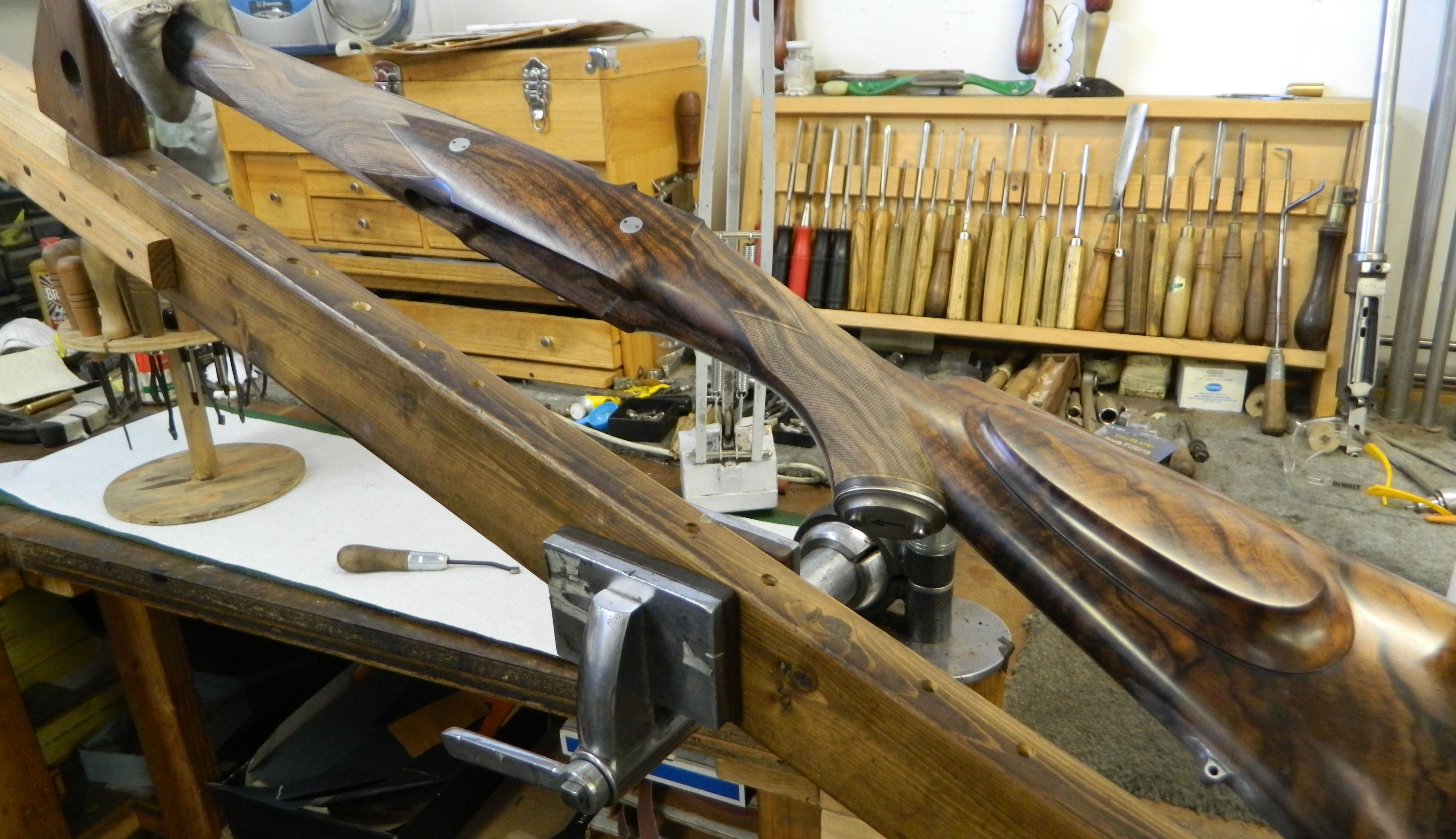
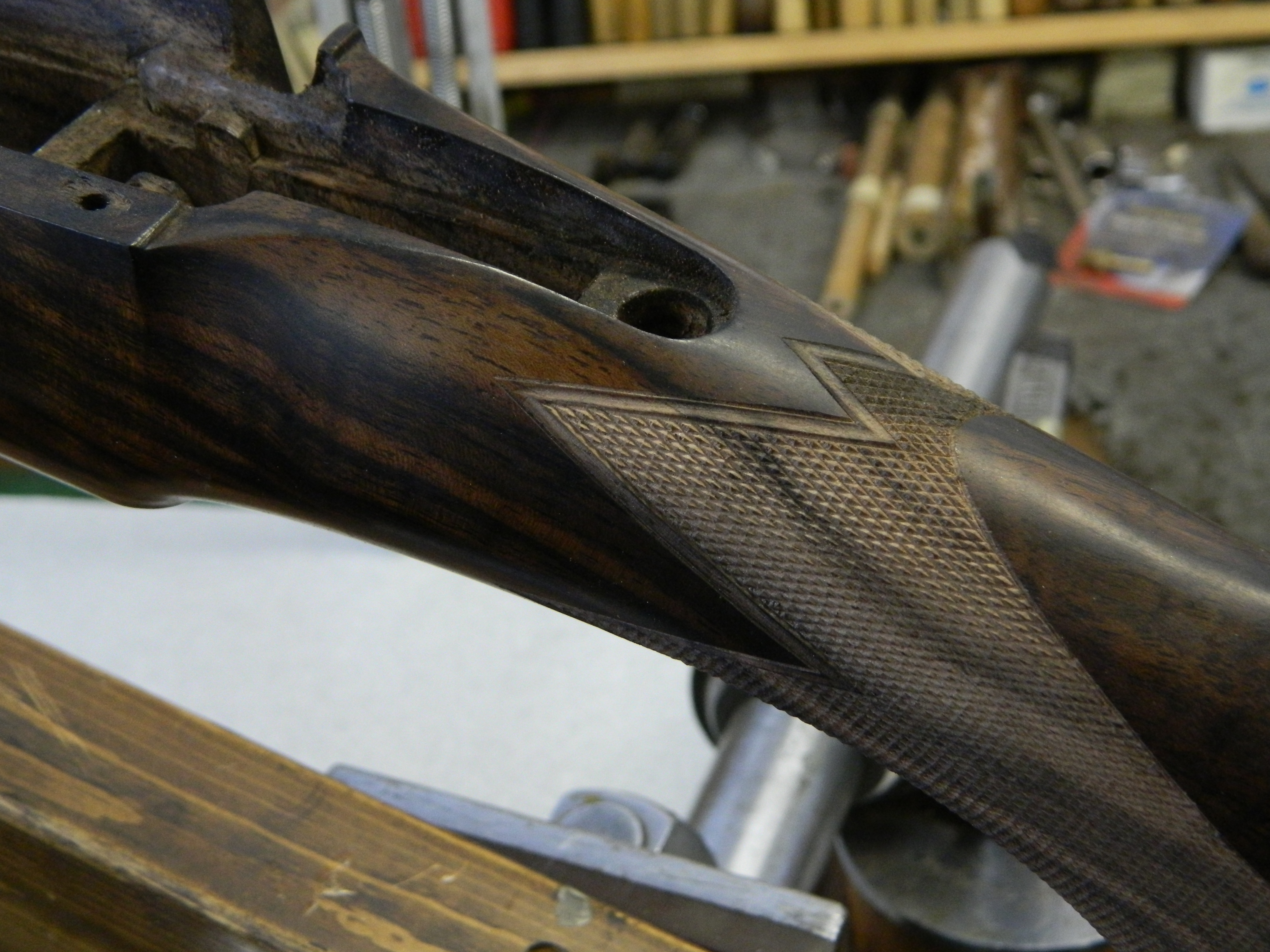
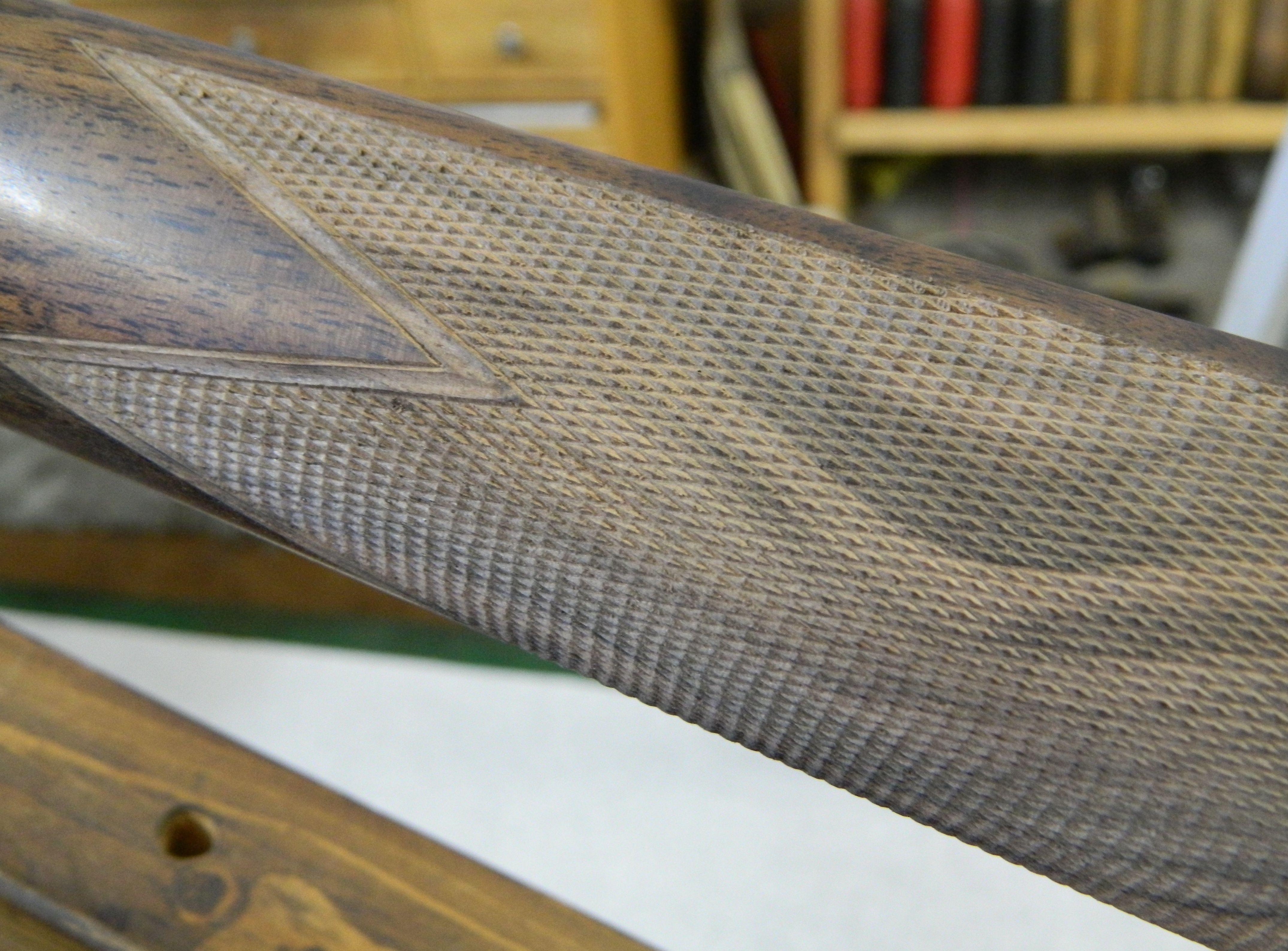
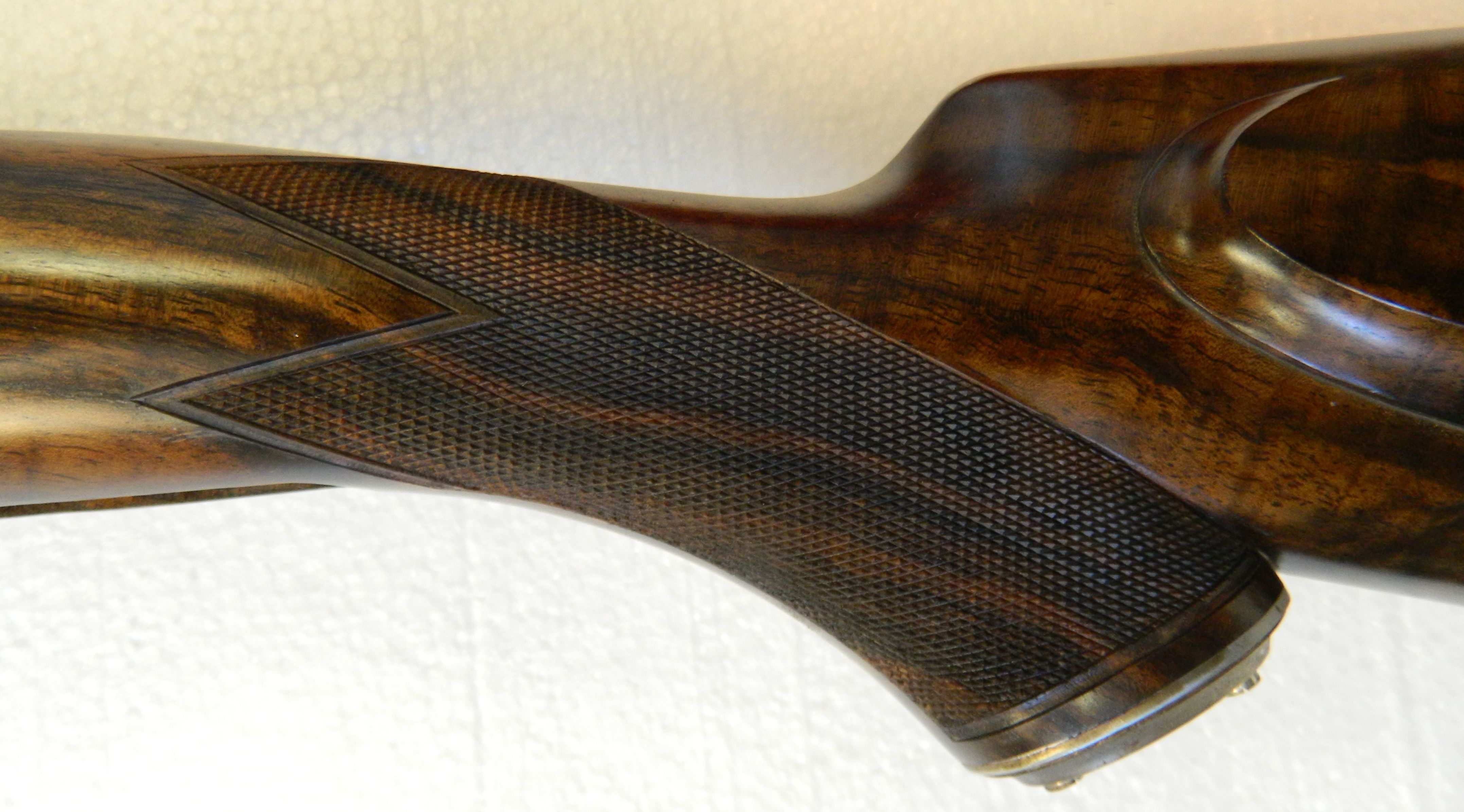
The pictures above are of a stock I have currently in process. The caliber of this rifle is .416 Ruger and features diamond point checkering.
I don’t have a checkering machine and I cut my checkering with hand tools. Good checkering machines are hard to find these days and I have had a machine on order for a few years. I’m sure it won’t be an easy switch, once I receive the machine, but it will certainly be easier on my wrists. The initial layout is always a little tricky. Once I get into the “groove” of cutting, I find checkering actually relaxing and enjoyable. My motto always is to fight one line at a time.
This rifle features flat top checkering.
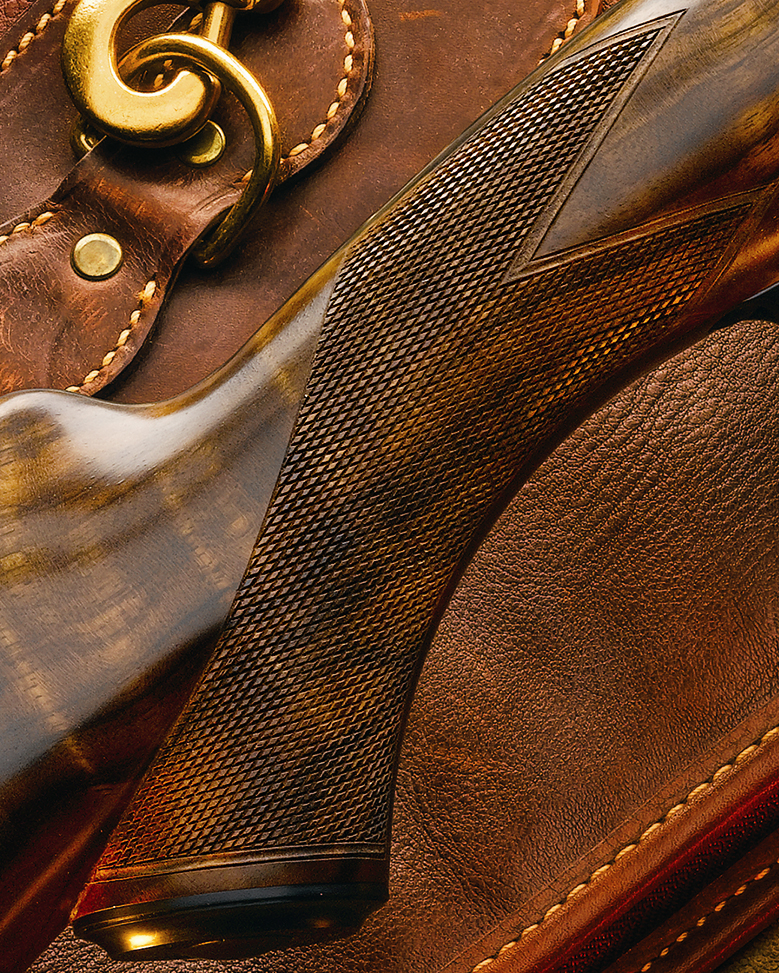
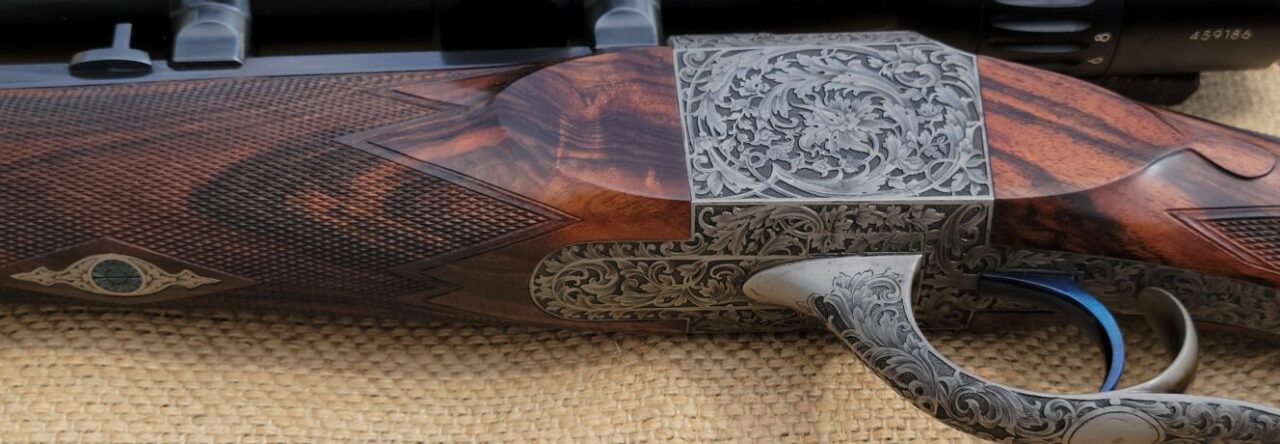
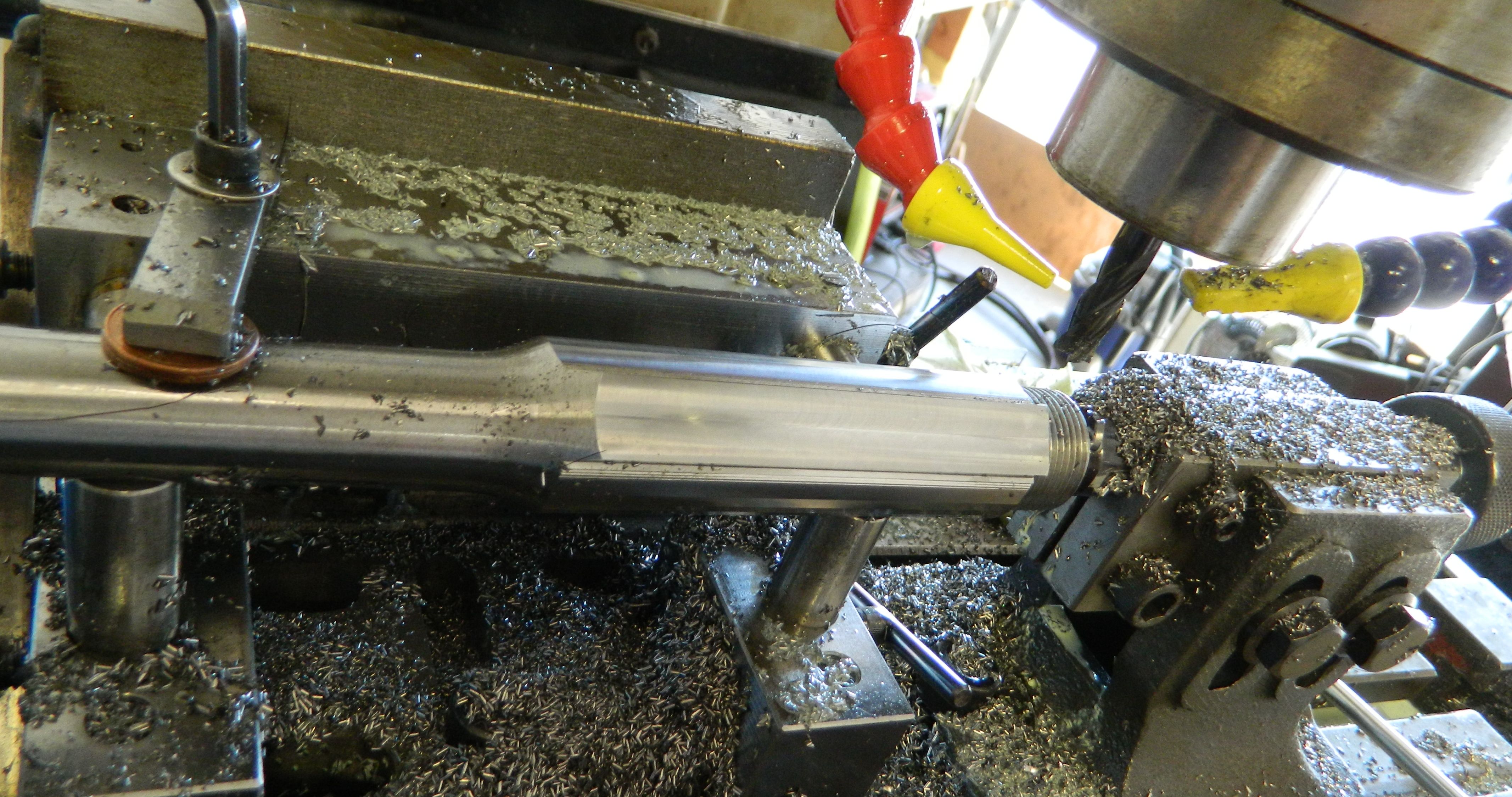
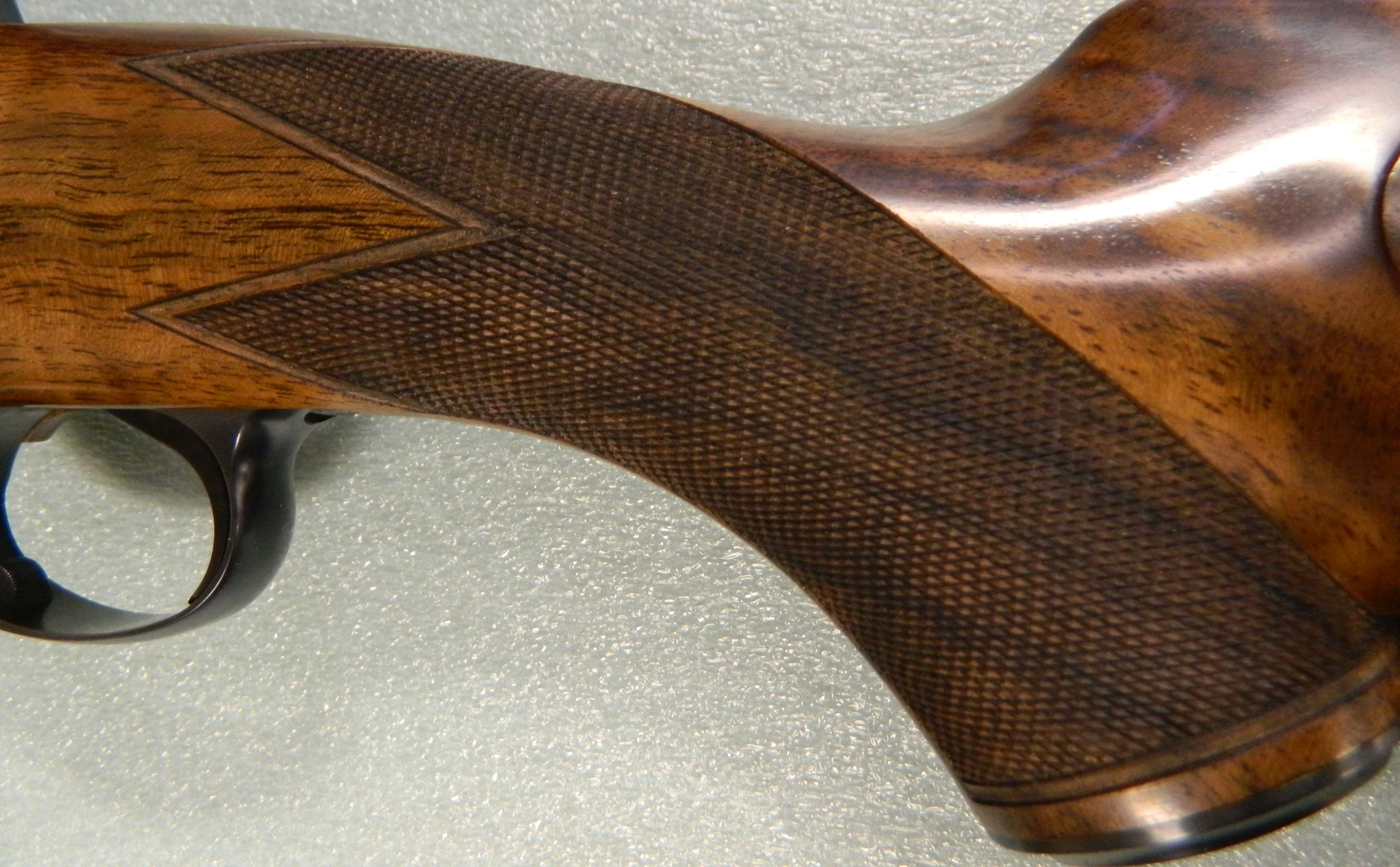
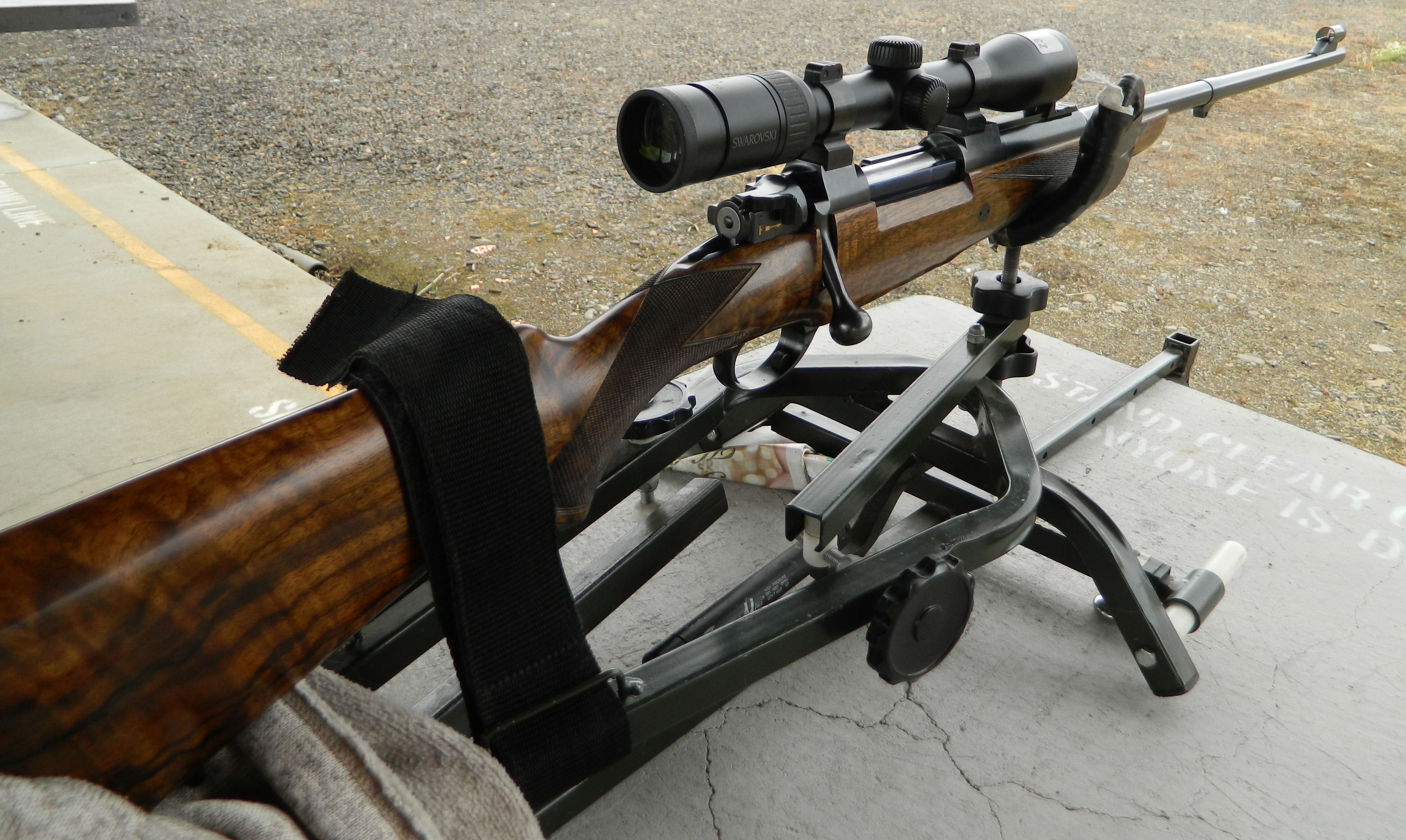
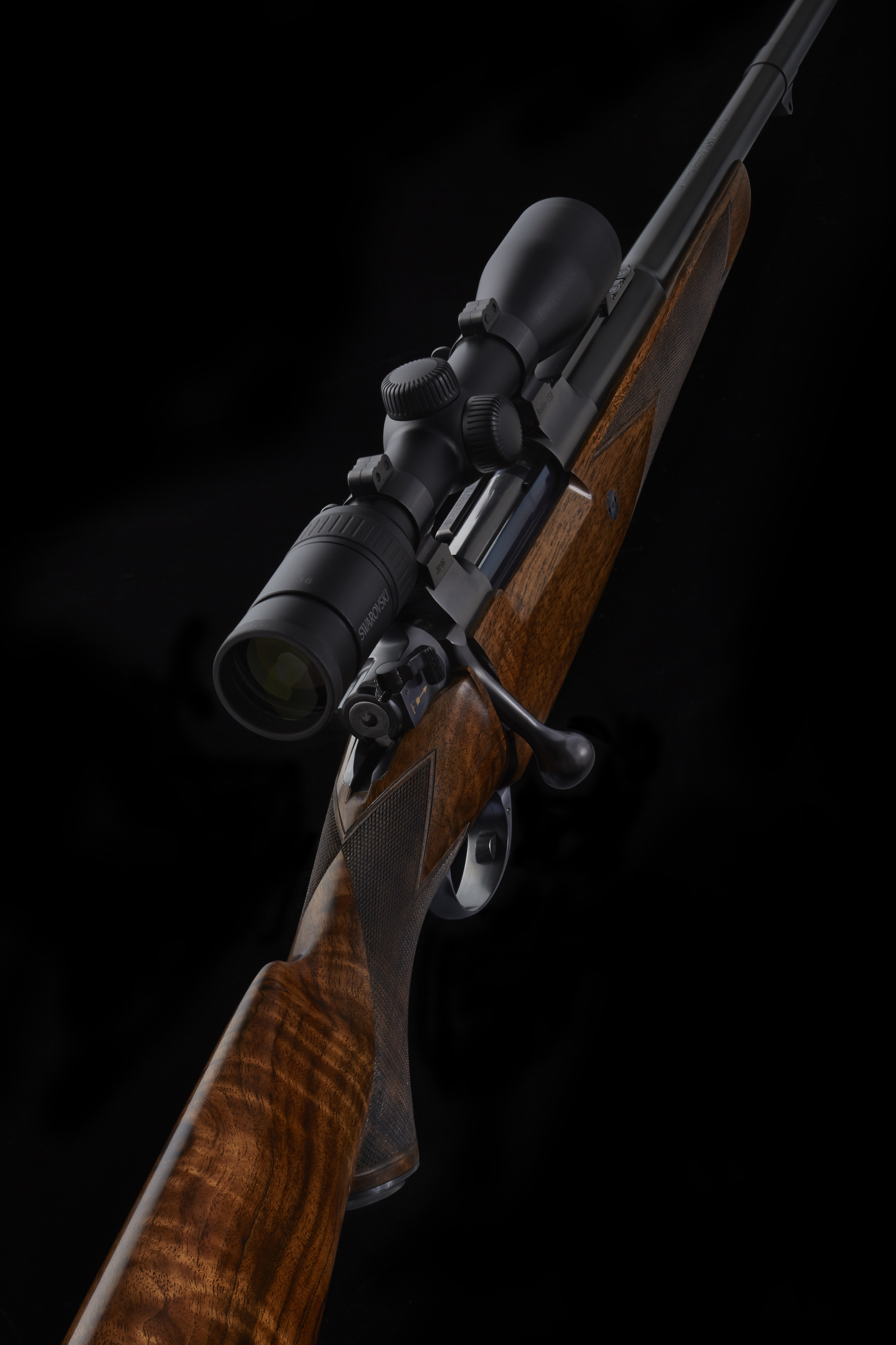

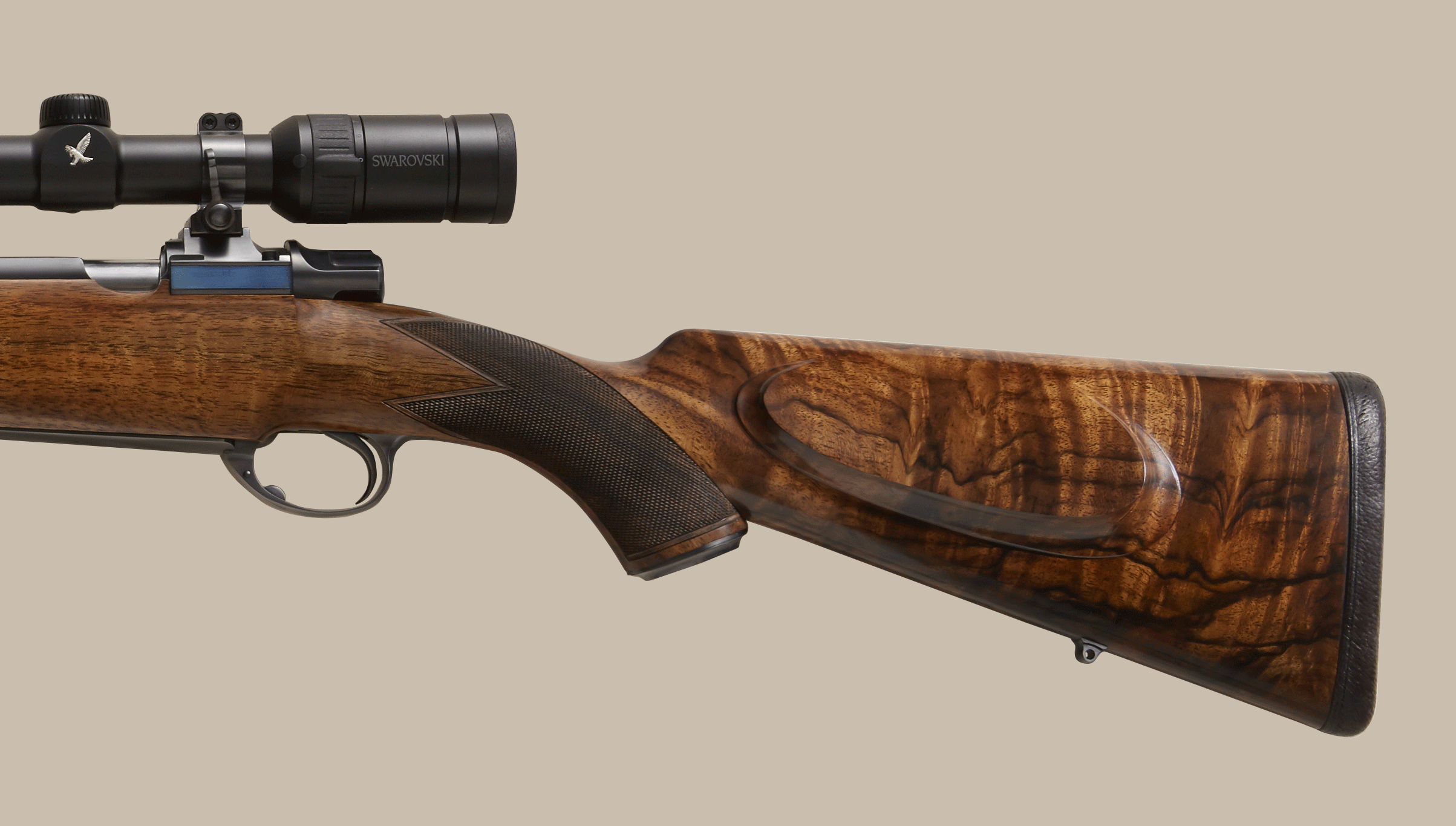
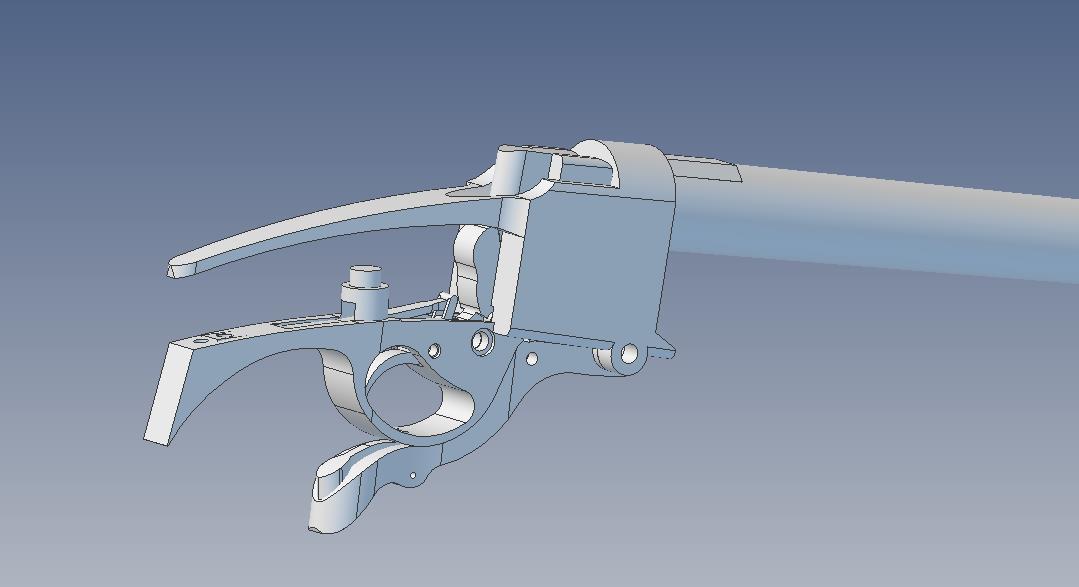
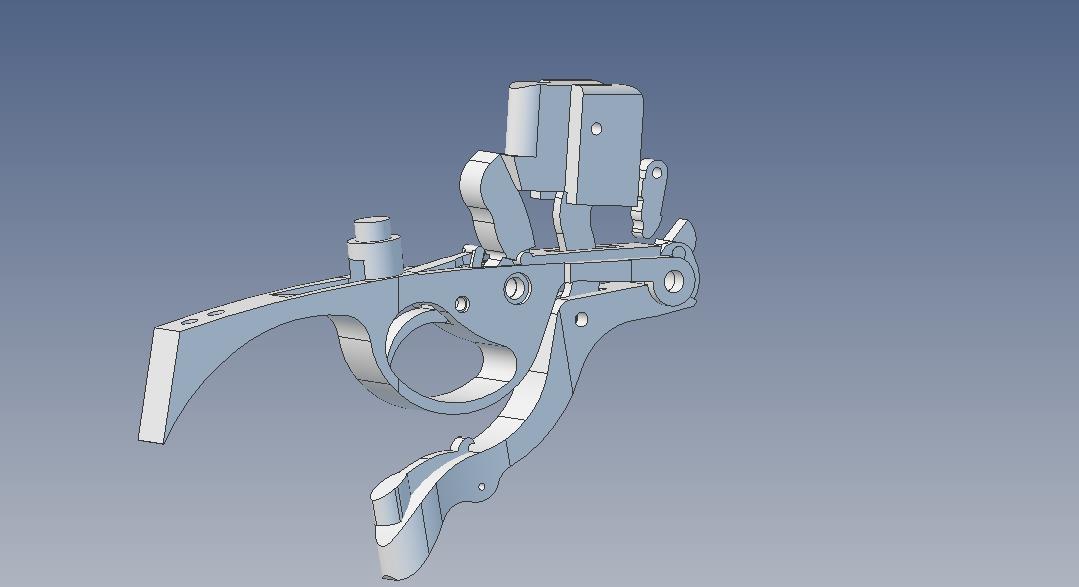
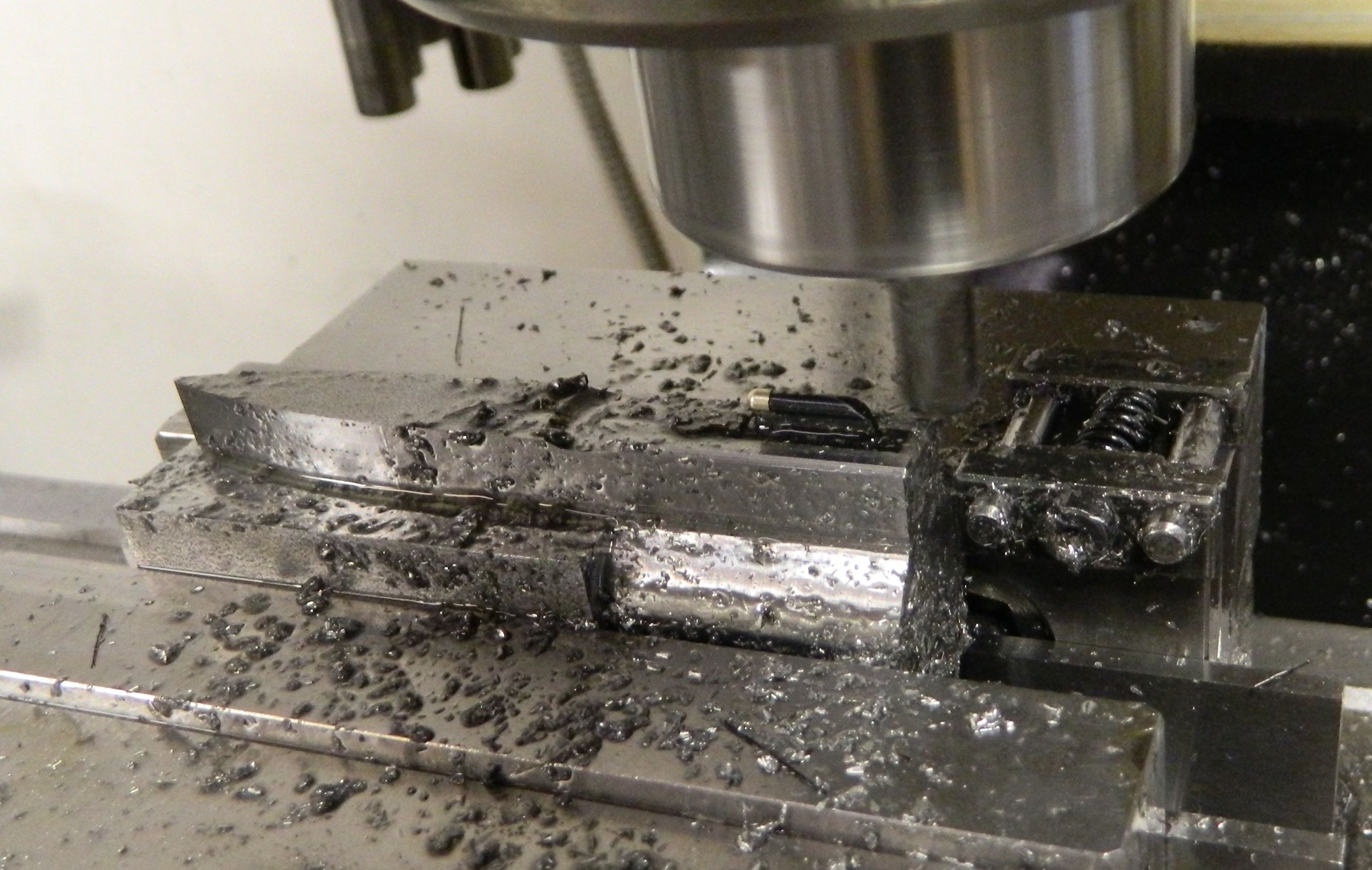
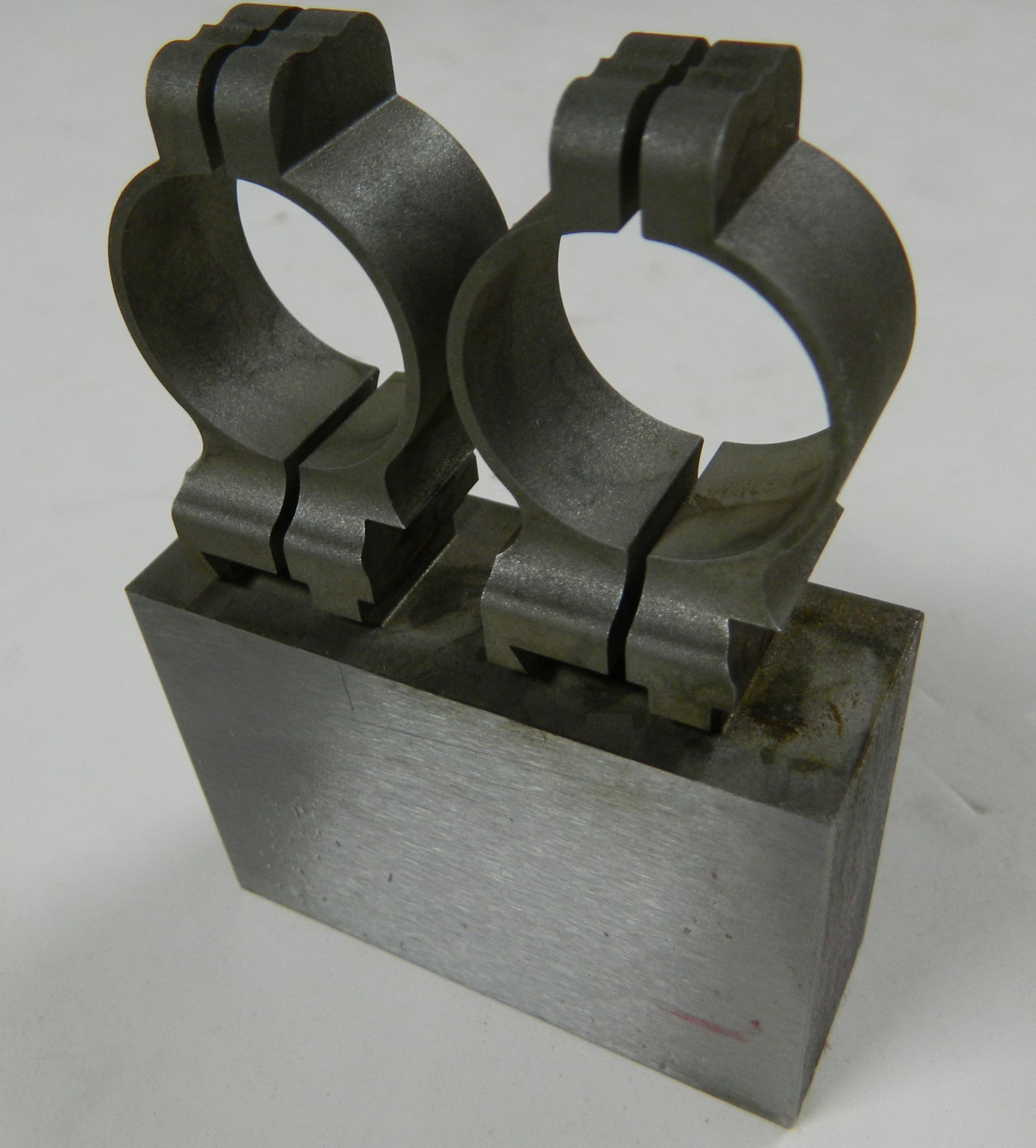
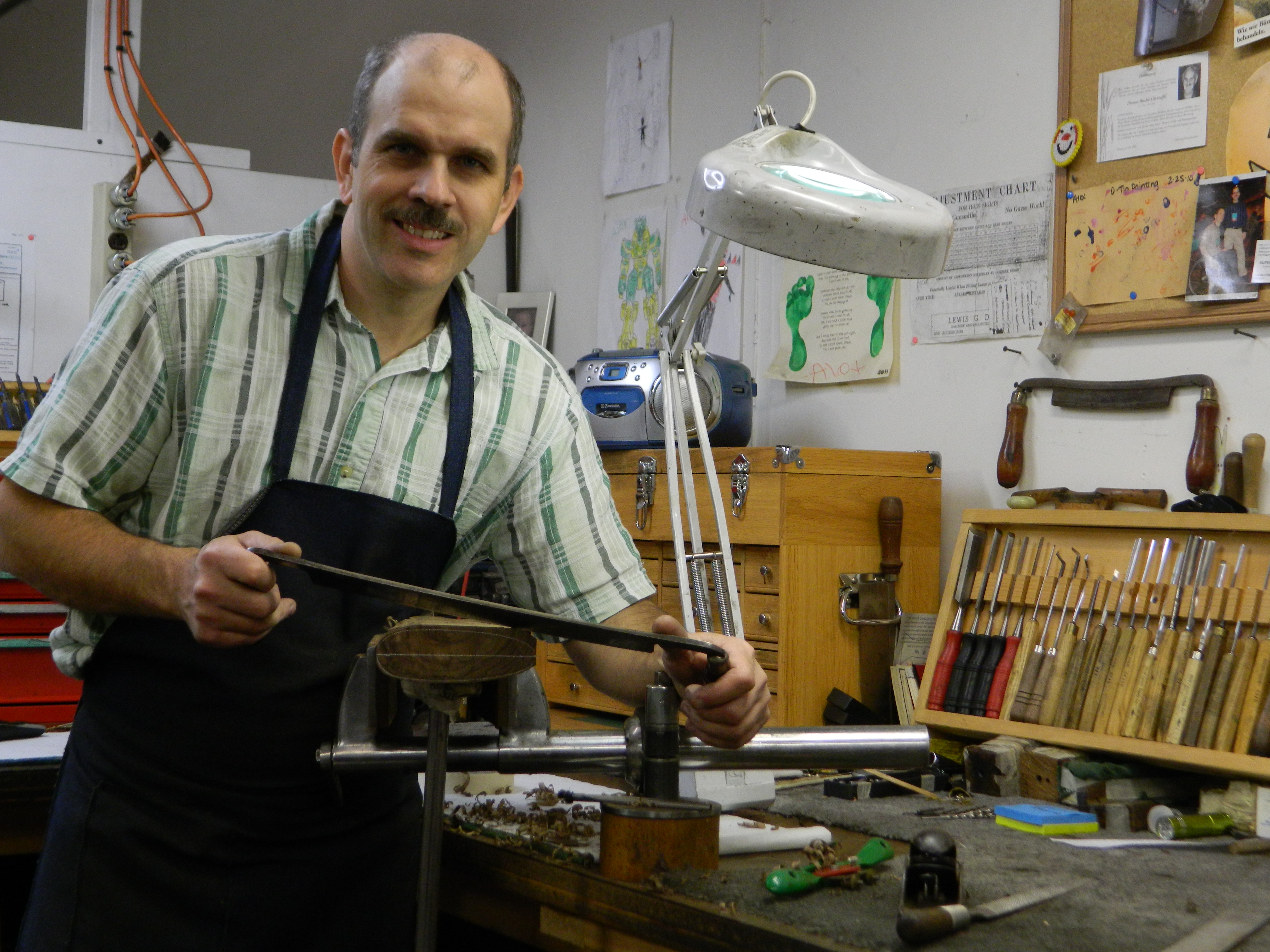
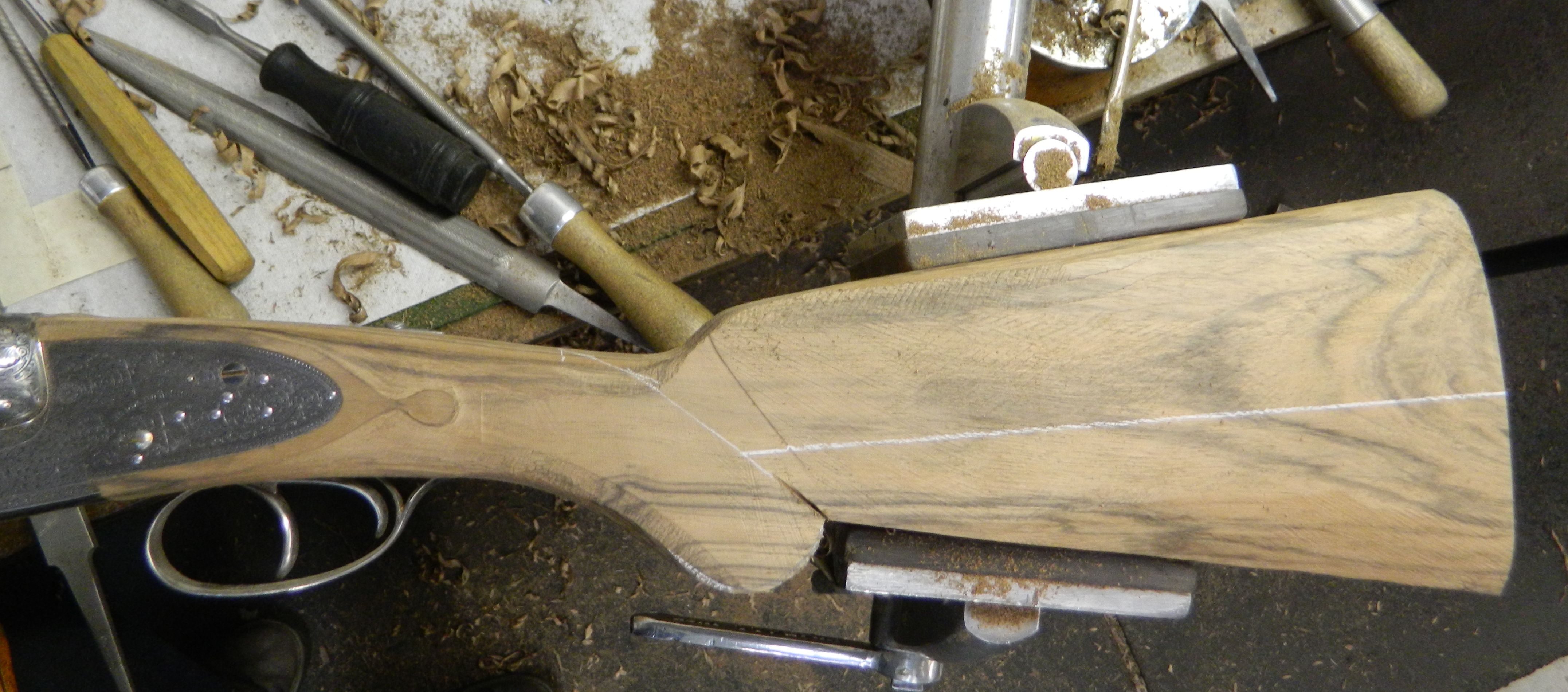
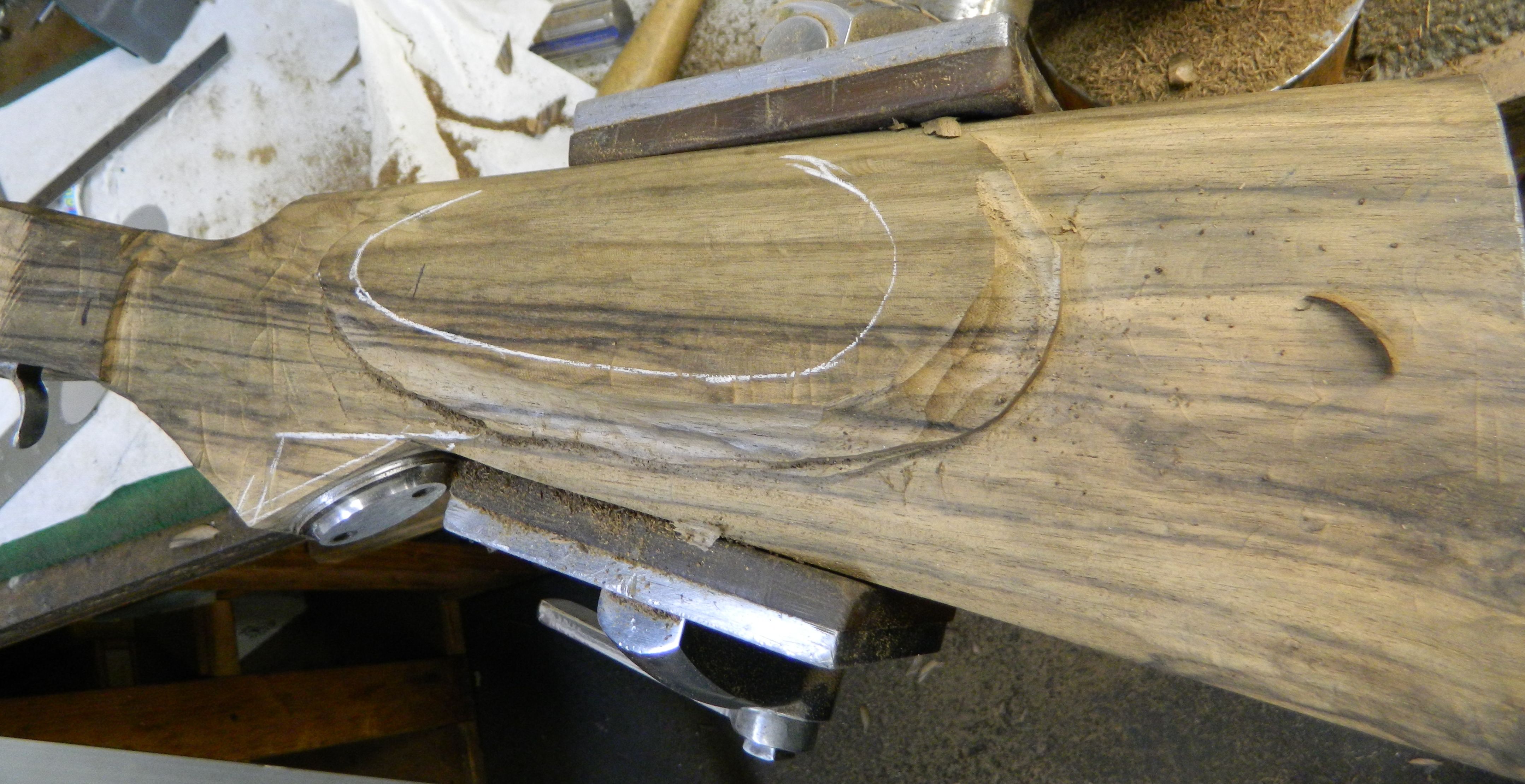
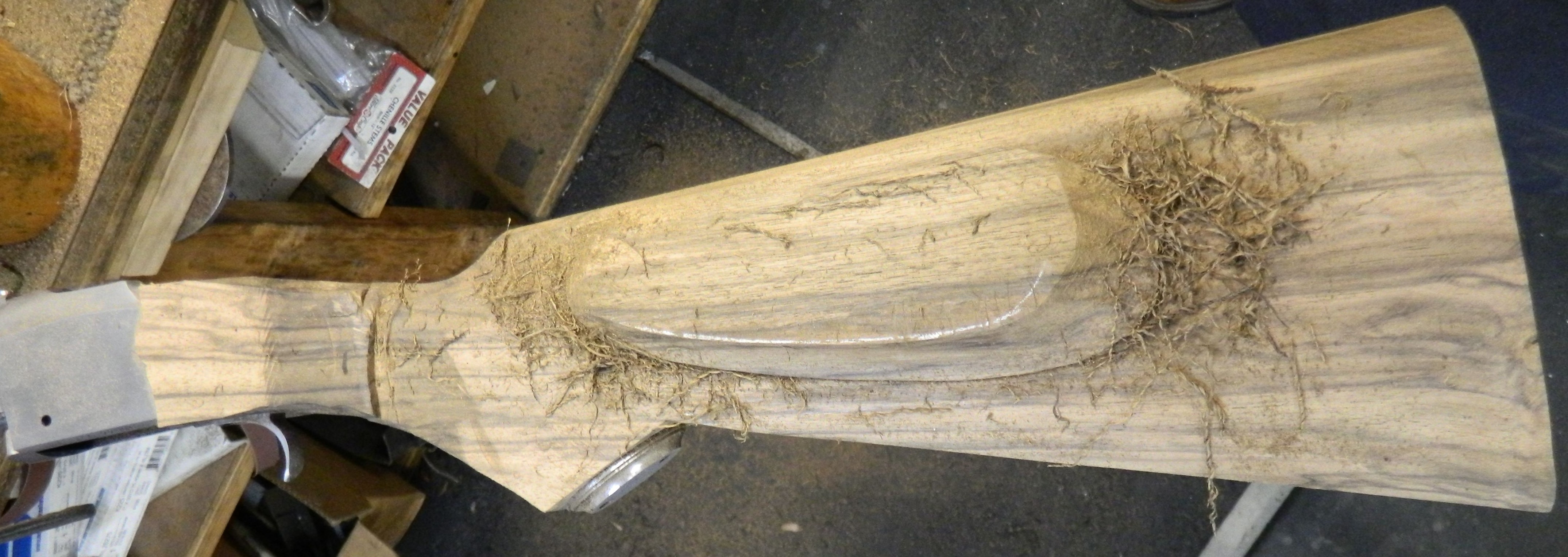

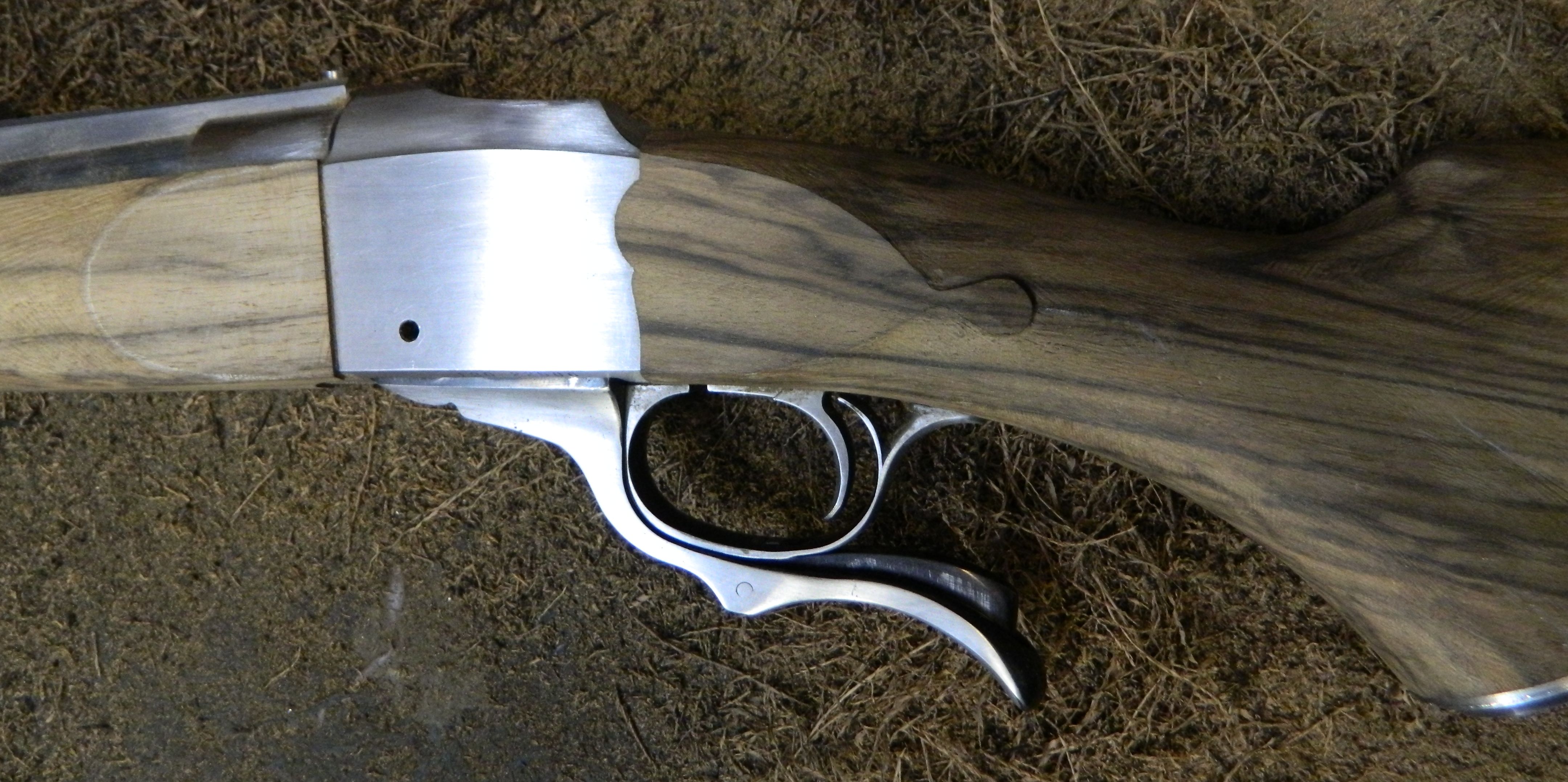
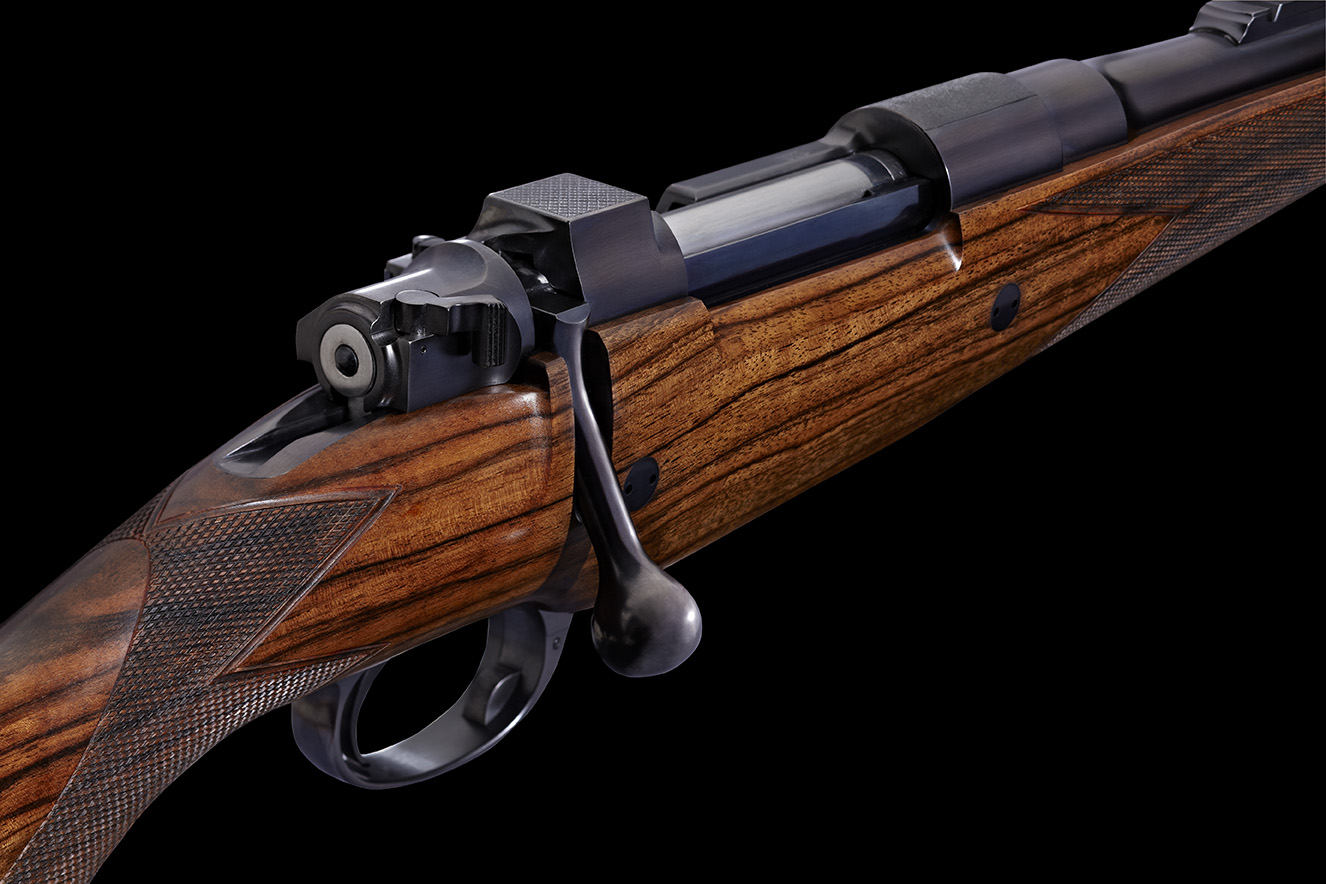 The combination of fine walnut and polished steel, made into a high precision instrument of beauty and style, yet capable of withstanding huge pressures and propelling a projectile faster then the speed of sound accurate into the center of a target, what’s not to love about it?
The combination of fine walnut and polished steel, made into a high precision instrument of beauty and style, yet capable of withstanding huge pressures and propelling a projectile faster then the speed of sound accurate into the center of a target, what’s not to love about it?